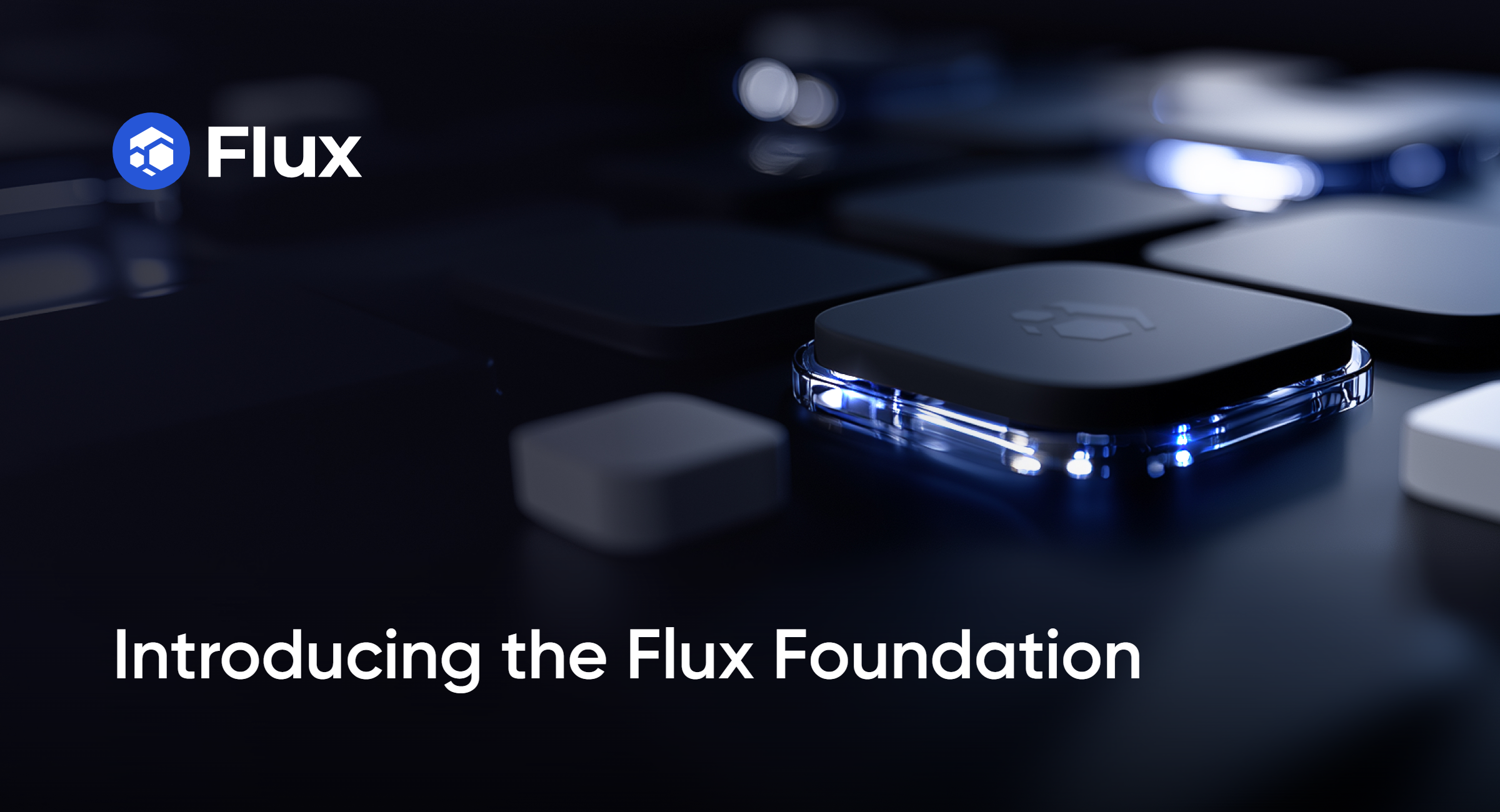We are taking Fluxers to the stratosphere with a new community-focused initiative, the Flux Foundation. Designed to serve as a sustainable growth engine for the ecosystem, the foundation will transform allocations of FLUX secured on-chain into node infrastructure and fund community programs and grants.
Why It Matters
The Flux Foundation will benefit from a steady allocation of FLUX. For every block mined, the foundation receives 0.5 FLUX, resulting in a consistent funding stream for ecosystem development and community growth. The Foundation will convert that consistent stream into predictable delivery, developing:
- increased FluxNode capacity, the backbones of the foundation
- increased FluxCloud deployments
- and additional educational resources.
The Flux Foundation will be community-governed, ensuring that Fluxers can trust how funds are distributed with complete transparency.
How it works
The Foundation will focus on funding ecosystem growth through yield-generating infrastructure on fixed terms, rather than liquidity. This means that the 0.5 FLUX block reward allocated to the Foundation will be used to pay for and operate Stratus FluxNodes.
The block rewards yielded from Foundation-owned nodes will be locked as collateral to fund grants in three main areas of growth: community, operations, & marketing, with a portion allocated to a strategic reserve, diversified across multiple cryptocurrencies.
Grant Details
Grants will be issued by the foundation to projects and initiatives that aim to drive network adoption in one of the three areas of growth.
Some examples of grant-funded initiatives that the Foundation will launch to drive adoption in the three areas of growth include hackathons and bounties, dApp proposals, and establishing an educational Flux Academy featuring product tutorials.
Grants are infrastructure-backed (they are funded by yield generated from Foundation-owned FluxNodes) and will be issued on fixed terms so that when a grant expires, those funds can then be distributed to the next project.
There will be three term lengths for grants that prioritize high-utility dApps, ecosystem tooling, and core services like compute provision and storage:
- Short-Term: 1 Nimbus node for six months, ideal for hackathon winners and early-stage projects.
- Medium-Term: 1 Nimbus and Stratus bundled for 1 year, designed for large-scale applications and Flux Academy grads ready to contribute.
- Strategic Long-Term: Multiple Stratus nodes for a fixed term of 3-5 years, for core infrastructure and AI or DePIN deployments and workloads that anchor the network.
Foundation Governance Structure
The Flux Foundation will be led by a board of five chairs that each perform a specific role:
- The first chair is the Strategy and Technical Ecosystem lead (Davy Wittock), who will provide the overall strategic vision for the foundation to ensure technical alignment of funded grants with Flux products.
- The second chair is an Enterprise & Partner Voice who will drive adoption with Web2 enterprise stakeholders.
- The third chair is a Treasury Professional, responsible for managing all funding inflows and outflows to protect the Foundation’s strategic reserve and ensure that funding streams are allocated appropriately.
- The fourth chair is a Legal & Compliance Advisor, who will ensure all grants, operations, and governance comply with relevant jurisdictional legislation to build institutional trust.
- The fifth and final chair will be an elected Community Governance Representative. The Flux community will vote in a dedicated and longstanding Fluxer to serve on the board and represent the people.
Conclusion
The Flux Foundation is a new initiative to drive adoption and expand ecosystem growth with grant-funded projects in the areas of community, operations, and marketing. By using a 0.5 FLUX reward allocation from every block mined to run Stratus FluxNodes, the Flux Foundation is committing to ecosystem reinvestment.
Token rewards generated from Foundation-owned nodes will be collateralized to further fund ecosystem services, including increasing the number of FluxNodes online, expanding FluxEdge resources, adding additional FluxCloud deployments, and strengthening the pipeline of educational programs.
This approach funds ecosystem growth through yield-bearing infrastructure secured on-chain, converting a predictable allocation of FLUX into grants for initiatives that spur adoption.
Grants are issued on fixed terms, with unused funds rolled forward to the following grant, ensuring capital remains productive. Grant terms, whether short, medium, or long, target what matters: high-utility apps that contribute to the core services of the network, such as compute provision and storage, while a strategic reserve protects continuity.
Trust is built into the Foundation by design. A five-seat board with distinct, clear roles, transparent reporting, and community participation ensures the proper checks are in place as the ecosystem scales.
What this enables for Fluxers is more reliable infrastructure for operators and developers, more grants and education for new entrants, and faster real-world adoption for teams deploying AI, DePIN, and cloud workloads on the Flux network.
The Flux Foundation will enable sustainable yield to become compounding momentum, allowing developers to develop and builders to build, thereby driving ecosystem growth. For more information on the launch of the Flux Foundation, rewatch our AMA; it’s packed with everything you need to know.
